Do you ever feel stuck trying to generate new ideas or make connections between your scattered thoughts? Mind mapping is not just a visual thinking technique; it’s a creative powerhouse that helps to boost your creativity and productivity.
Mind mapping allows you to organize information in a nonlinear way. At the center of your mind map is a key concept or idea. The main themes, topics, and related ideas branch out from this central idea. These branches have sub-branches sprouting from them with more detailed thoughts. Lines connect different concepts to show how they relate. Mind maps utilize colors, visuals, words, and structure to represent ideas and their connections.
Some key features that make mind mapping effective include a central focus point, main themes radiating out, branches with sub-topics, keywords as triggers, color-coding of ideas, images, and symbols to add visual interest, and a flexible nonlinear structure.
Table of Contents
How to Create Your Own Mind Maps
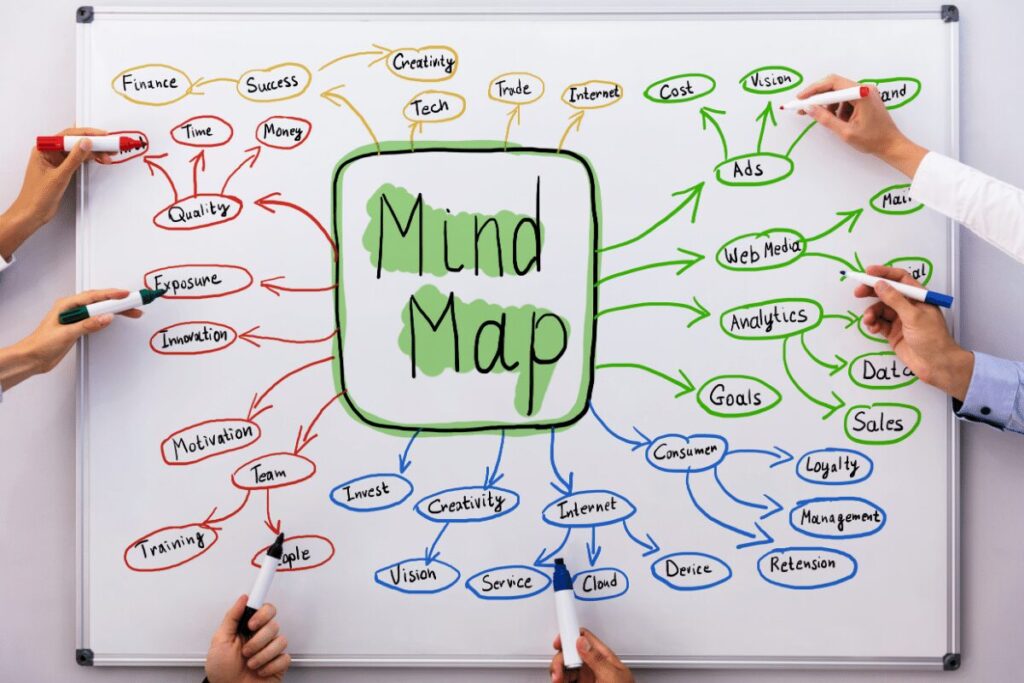
Before diving into the many benefits of mind mapping, let’s look at how you can start creating mind maps yourself. It’s easy to get started with some basic supplies and these steps:
- Define your central idea and write it in the middle of your paper. Circle it.
- Identify the main themes related to the central idea. Draw them as branches radiating out.
- Add sub-branches off the main branches with more specifics.
- Use keywords, images, symbols, and codes throughout the map.
- Color code branches to differentiate ideas.
- Draw connections between related branches. Look for relationships.
- Develop the map by adding new associated ideas.
- Refine the mind map by prioritizing and pruning branches.
- Turn it into action steps for implementation. Review it later for new insights.
Here is a simple example mind map created to brainstorm ideas: [INSERT GRAPHIC]
With practice, you’ll soon be mind mapping for everything from daily to-dos to big projects!
Boosts Your Creativity and Sparks Connections
Mind mapping awakens your creativity and lets you break free from mental ruts. The nonlinear visual format aligns perfectly with creative thinking by allowing ideas to flow freely without judgment – this stimulates unexpected connections, which is where innovation happens.
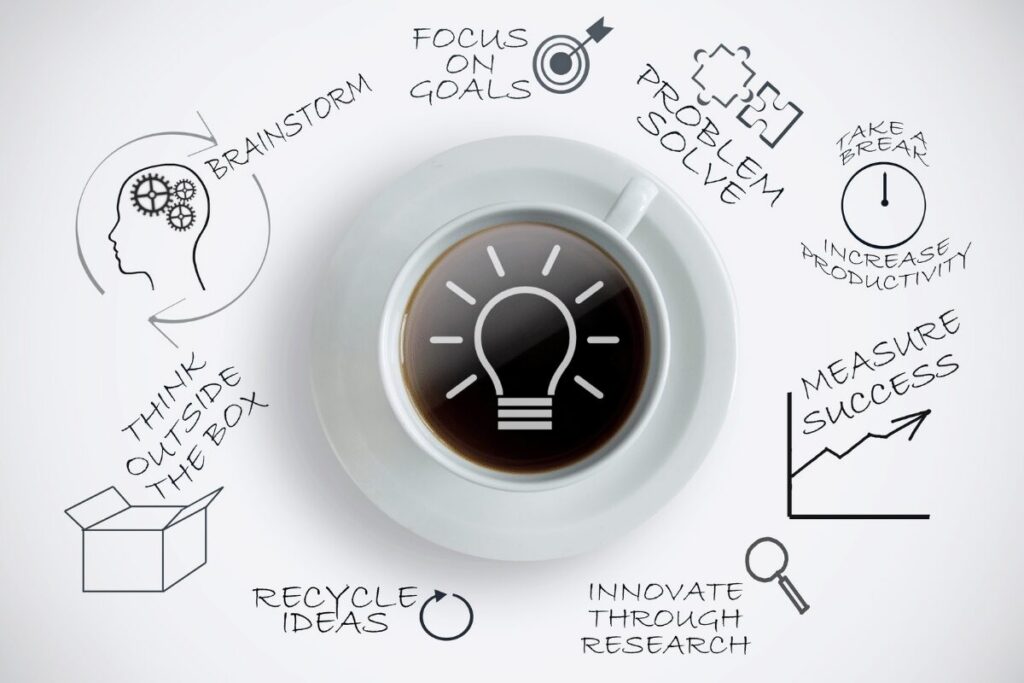
Seeing all your thoughts mapped out lets you identify insights and “Aha!” moments you may have missed otherwise. Mind mapping utilizes your brain’s full capacity for imagination, synthesis, and association.
Organizes Your Thoughts
Mind mapping keeps your thoughts organized so you can think more clearly. A mind map provides an external place to offload information so you can focus. It also breaks down topics into manageable pieces visually.
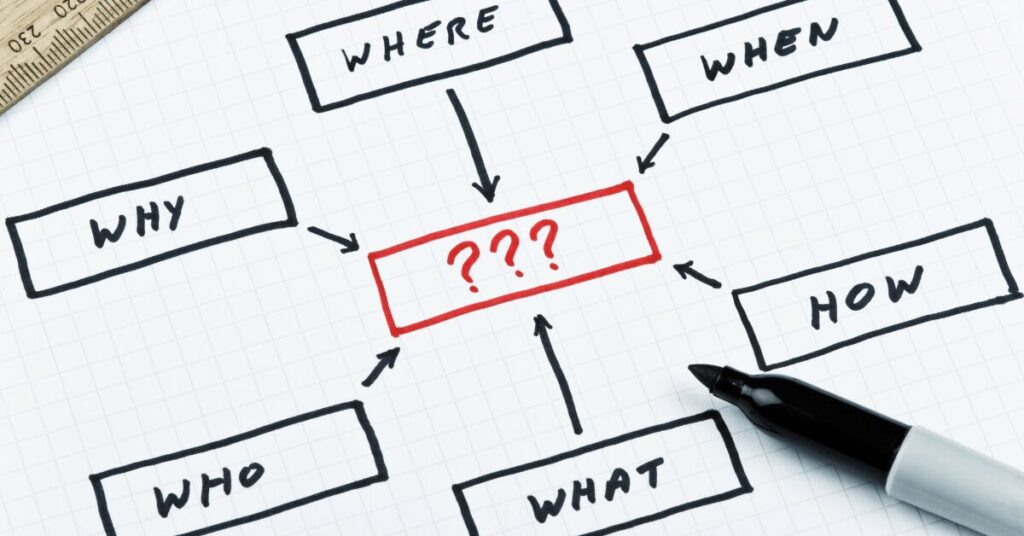
You gain clarity from seeing the overall structure while zooming into details as needed. Your thoughts become less scattered, and uncertainty fades. The visual design makes mind mapping more engaging than traditional note lists. You become motivated to add new ideas as the branches expand.
Encourages Whole-Brain Thinking
Mind mapping utilizes your brain’s full capacity by integrating both hemispheres. The nonlinear visual layout of a mind map aligns with the skills of the brain’s right hemisphere, which contributes creative flair through visuals, colors, and fluid organization. At the same time, the logical structure of the map leverages the strengths of the left hemisphere, which lends order, logic, and details. This whole-brain approach allows you to blend imagination with structure for optimal results, whether working solo or in groups.

For example, using a mind map to develop a project plan would involve imaginative right-brained brainstorming to define goals and vision while incorporating the pragmatic left-brained approach of organizing steps and timelines. By combining the strengths of both hemispheres in this way, mind mapping leads to innovative solutions that have organized implementation plans. The technique results in balanced decisions and enhanced brain function overall.
Provides an Ideal Brainstorming Tool
Mind mapping allows quick capture of thoughts without censorship. This flexibility and freedom are ideal for gathering diverse ideas and perspectives when brainstorming. Group mind-mapping sessions take collaboration to the next level by synthesizing everyone’s creativity visually.

Mind mapping can organize ideas, define priorities, refine details, and map out action plans after initial brainstorming. The mind map evolves through collaborative ideation, structured thinking, and implementation cycles.
Kick-Starts Your Projects
Mind mapping can clarify any project or goal and get it off the ground. Outline key elements like deadlines, resources, and phases as branches radiating from the central goal. See the scope of your project mapped out visually, then prioritize and sequence the next steps.

An evolving mind map keeps you organized, motivated, and in control. Whether planning an event or launching a business, mind mapping defines the roadmap so you can take confident steps forward.
Facilitates Effective Problem Solving
Mind mapping allows you to analyze challenges from multiple angles. Build branches for variables like resources, root causes, barriers, stakeholders, and options related to the central issue.
Reviewing the visual map helps uncover potential weak points and effectively target interventions. Solutions become clearer thanks to the multidimensional perspective. Mind mapping brings clarity to any problem by mapping out complexity.
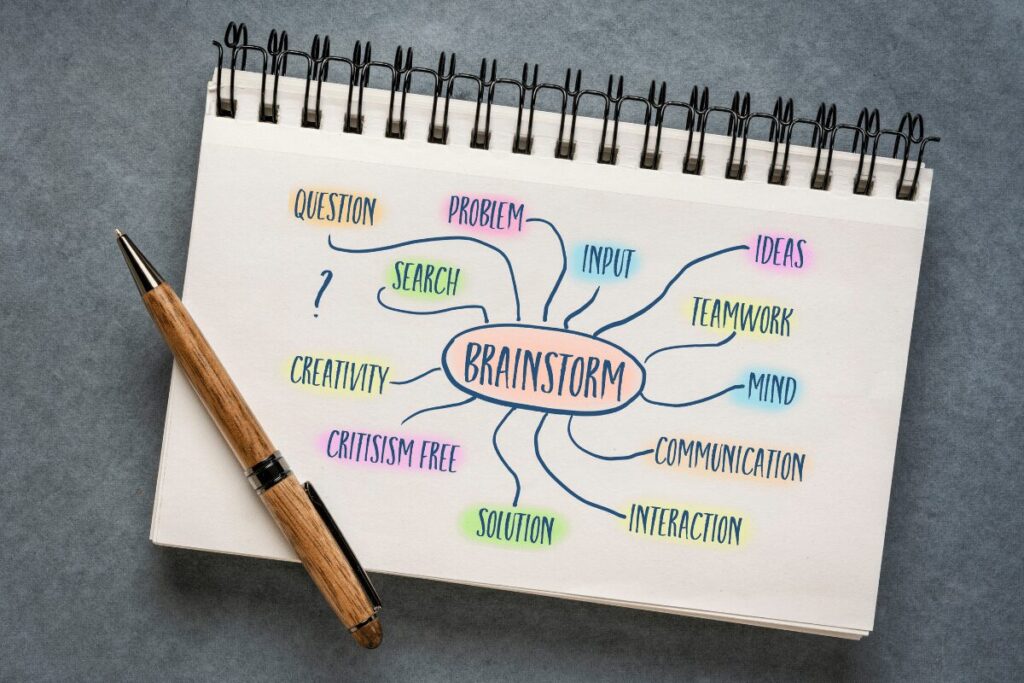
You can take mind mapping to the next level using digital tools with advanced features. Here are some top options to explore:
- MindMeister: Intuitive online mind mapping with collaboration features.
- MindNode: Sleek mind mapping for Mac and iOS with seamless syncing.
- Coggle: Online mind mapping for teams with a free basic version.
- Xmind: Powerful mind mapping software with diagrams and charts.
- iThoughts: Robust iOS mind mapping app for individuals.
Review your digital or paper mind maps days later for fresh perspectives and insights!
Tips for Mind Mapping Success
- Make the central idea stand out.
- Prioritize key themes closer to the center.
- Use brief keywords and phrases instead of text blocks.
- Add inspiring visuals and symbols throughout.
- Use color strategically to group ideas.
- Review mind maps days later for new insights.
The Power of Mind Mapping
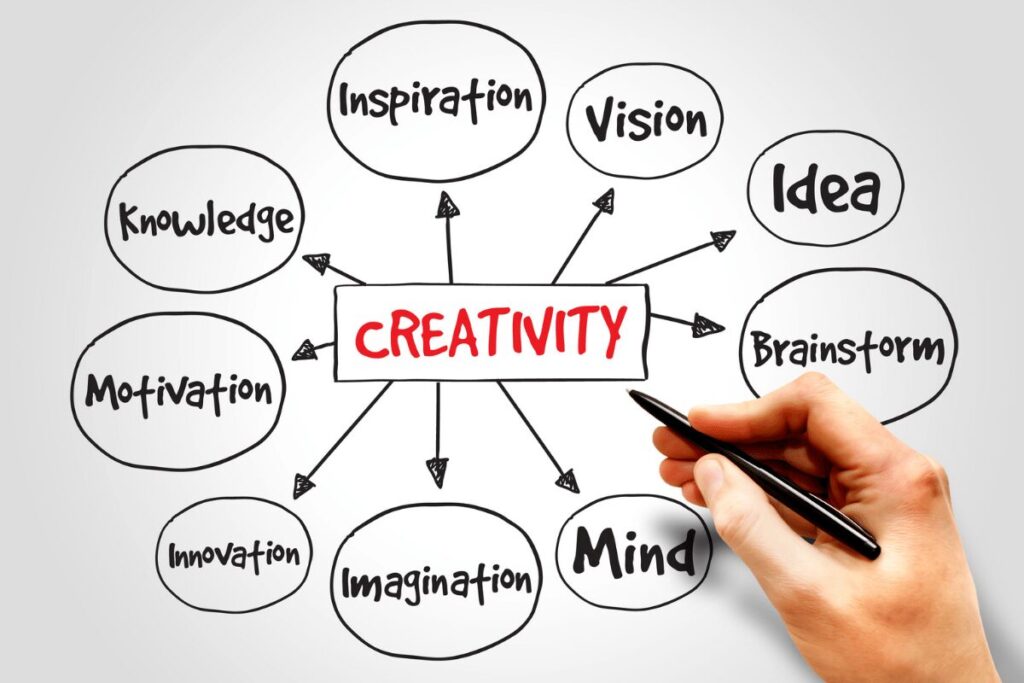
Mind mapping allows you to organize information visually, see connections, and maximize brainpower. Implementing this technique will boost your productivity, creativity, and strategic thinking. Mind mapping provides the ideal flexible framework for generating ideas, solving problems, planning projects, or collaborating with others.
Give mind mapping a try – you’ll be amazed at how this simple practice can expand your thinking and unlock your potential!
Live Your Life & Love It!!
Other Articles: Enjoy
FAQs
What is mind mapping?
Mind mapping is a visual thinking technique that structurally organizes information and concepts in a visual diagram.
How do you create a mind map?
To create a mind map, start with a central topic and add branches of related ideas and keywords. Connect the branches to illustrate relationships between concepts.
What is an example of mind mapping?
An example is creating a mind map to brainstorm ideas for an advertising campaign, with the central topic being the product and branches for marketing messages, media channels, audience targeting, etc.
What are mind mapping skills?
Mind mapping skills include the ability to organize information in a nonlinear way visually, see connections between concepts, and synthesize ideas creatively.
What is the mind-mapping method of creative thinking?
Mind mapping taps into creative thinking by allowing free-flowing nonlinear associations between ideas, sparking new connections.
How do you make a creative mind map?
Make a creative mind map using colors, symbols, and visuals to engage your imagination. Let ideas flow freely without censorship.
What are the seven steps to creating a mind map?
The seven steps are:
1) Define the central idea
2) Add main branches
3) Add sub-branches
4) Add keywords/images
5) Add colors
6) Connect branches
7) Refine the map.
How is mind mapping used in design thinking?
In design thinking, mind maps can visualize research insights, brainstorm ideas, and map the end-to-end design process.
What is the mind-mapping technique of creativity?
The mind-mapping creativity technique involves visual connections between concepts to generate insights and new ideas.
How do you use mind maps to unleash your brain’s creativity and potential?
Mind maps unleash creativity by allowing you to organize thoughts visually, make new connections between ideas, and engage both brain hemispheres.









